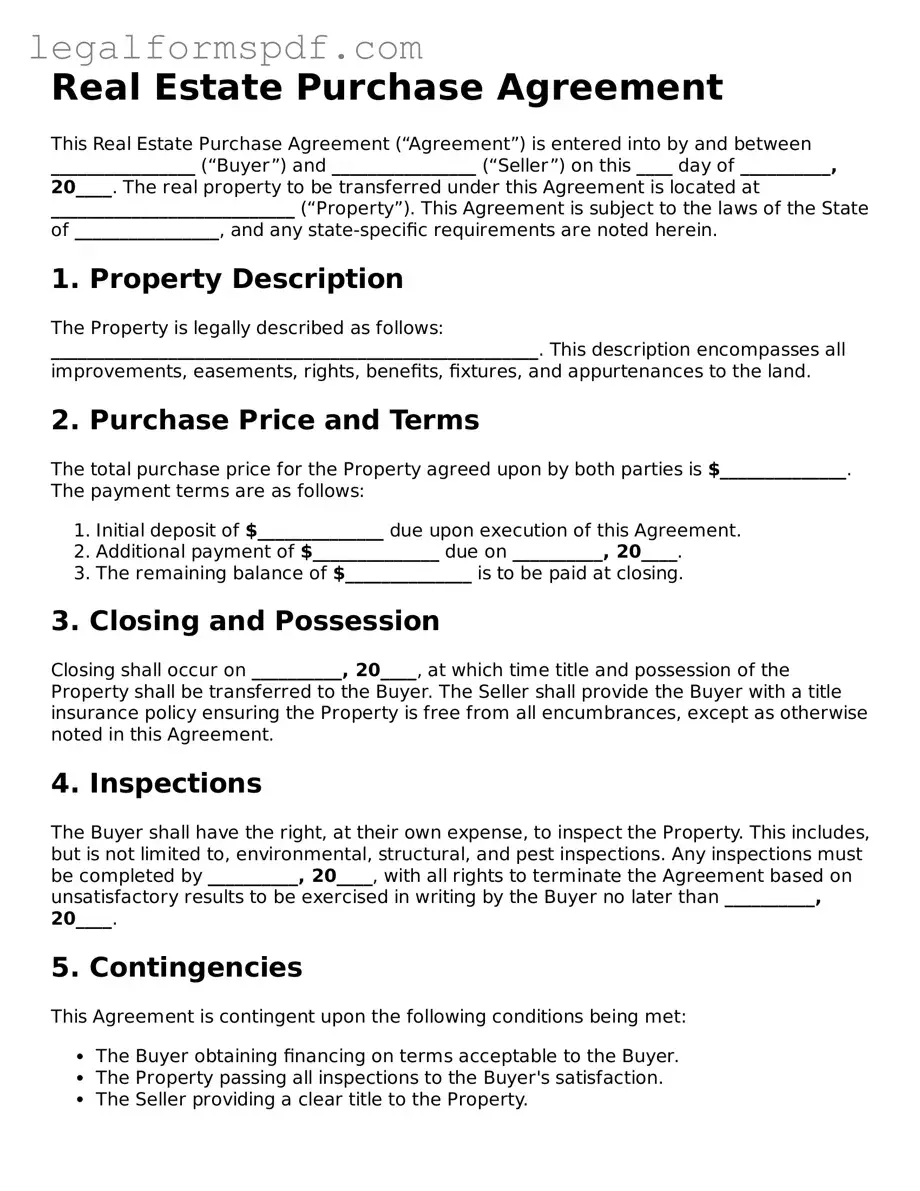Real Estate Purchase Agreement
This Real Estate Purchase Agreement (“Agreement”) is entered into by and between ________________ (“Buyer”) and ________________ (“Seller”) on this ____ day of __________, 20____. The real property to be transferred under this Agreement is located at ___________________________ (“Property”). This Agreement is subject to the laws of the State of ________________, and any state-specific requirements are noted herein.
1. Property Description
The Property is legally described as follows: ______________________________________________________. This description encompasses all improvements, easements, rights, benefits, fixtures, and appurtenances to the land.
2. Purchase Price and Terms
The total purchase price for the Property agreed upon by both parties is $______________. The payment terms are as follows:
- Initial deposit of $______________ due upon execution of this Agreement.
- Additional payment of $______________ due on __________, 20____.
- The remaining balance of $______________ is to be paid at closing.
3. Closing and Possession
Closing shall occur on __________, 20____, at which time title and possession of the Property shall be transferred to the Buyer. The Seller shall provide the Buyer with a title insurance policy ensuring the Property is free from all encumbrances, except as otherwise noted in this Agreement.
4. Inspections
The Buyer shall have the right, at their own expense, to inspect the Property. This includes, but is not limited to, environmental, structural, and pest inspections. Any inspections must be completed by __________, 20____, with all rights to terminate the Agreement based on unsatisfactory results to be exercised in writing by the Buyer no later than __________, 20____.
5. Contingencies
This Agreement is contingent upon the following conditions being met:
- The Buyer obtaining financing on terms acceptable to the Buyer.
- The Property passing all inspections to the Buyer's satisfaction.
- The Seller providing a clear title to the Property.
6. Default
If either party fails to fulfill their obligations under this Agreement, the non-defaulting party shall have the right to pursue any remedies available under the laws of the State of ________________ or as provided herein.
7. Amendments
Any amendments to this Agreement must be made in writing and signed by both parties.
8. Entire Agreement
This document, including any attachments and exhibits, constitutes the entire agreement between the Buyer and the Seller. It supersedes all prior negotiations, representations, or agreements, either written or oral.
IN WITNESS WHEREOF, the parties have executed this Agreement as of the date first above written.
Buyer's Signature: _______________________________ Date: ______________
Seller's Signature: _______________________________ Date: ______________
